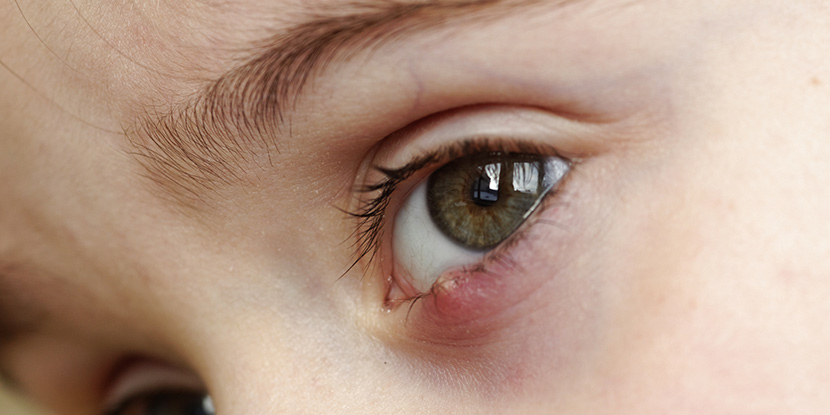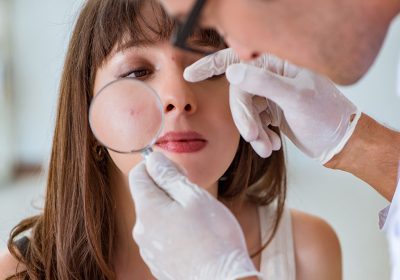
Styes and chalazia: Differences and risks
Styes and chalazia are both very similar looking, although the underlying cause is the main way to tell them apart.
A stye will generally appear near to the edge of one of the eyelids. They present as a sore, red bump that can look like a pimple, and are often caused by an inflamed eyelash follicle. If a stye comes up under the eyelid or inside it then it is considered an internal hordeolum.
Styes can also be brought on by a build-up of oil in a meibomian gland, again leading to inflammation and soreness. It’s a tiny gland situated inside the eyelid that provides oil to keep the eye lubricated.
Chalazia is literally the Greek word for “small lump.” Like styes, chalazia (the plural for chalazion) appear on the eyelid usually as the result of a clogged oil duct. However, typically chalazia have a more slowly developing etiology than styes. They are also usually larger than styes, and found further from the edge of the eyelid. Finally, styes are usually slightly painful and uncomfortable, whereas chalazia generally are not.
Who is most likely to develop a stye or chalazion?
Both are very common and can affect anyone of any age. However, some people have more chance of developing them than others.
Patients who are known to have a condition called blepharitis are particularly affected by styes and chalazia. Other risk factors include:
- Certain skin conditions like seborrheic dermatitis or acnea rosacea
- Previous styes or chalazia
- A previous diagnosis of systemic conditions such as diabetes
- Not completely removing eye make-up at night
- Using cosmetics that are old or contaminated
Styes and chalazia will go away on their own after a week or so. Typically nothing more than a regular warm compress is required, although occasionally the patient may need antibiotics.
Healthcare professionals should make sure their patient understands the importance of not touching the area as this can transfer bacteria. Any signs of infection, such as excessive drainage, severe pain, disturbed vision or feverlike symptoms should be urgently investigated.
Do you regularly see patients with styes or chalazia?
Although they’ve very common, styes and chalazia should be resolved efficiently in order to avoid further infection.
If you’re a clinician working in a surgery, hospital, care home or other healthcare environment, PDUK is pleased to offer three courses to choose from. Each of them are held online, making them perfect for flexible, remote learning and networking. They also cover these and other common conditions in more detail.
They are:
Minor ailments: ear and eye conditions for the primary care practitioner
Minor illness triage essentials
Each course is worth between 4 and 21 valuable hours of CPD with all course materials and evaluations provided. However, despite being delivered via Zoom, spaces are still limited to allow for effective learning. So make sure you book up as soon as possible to avoid disappointment!


















